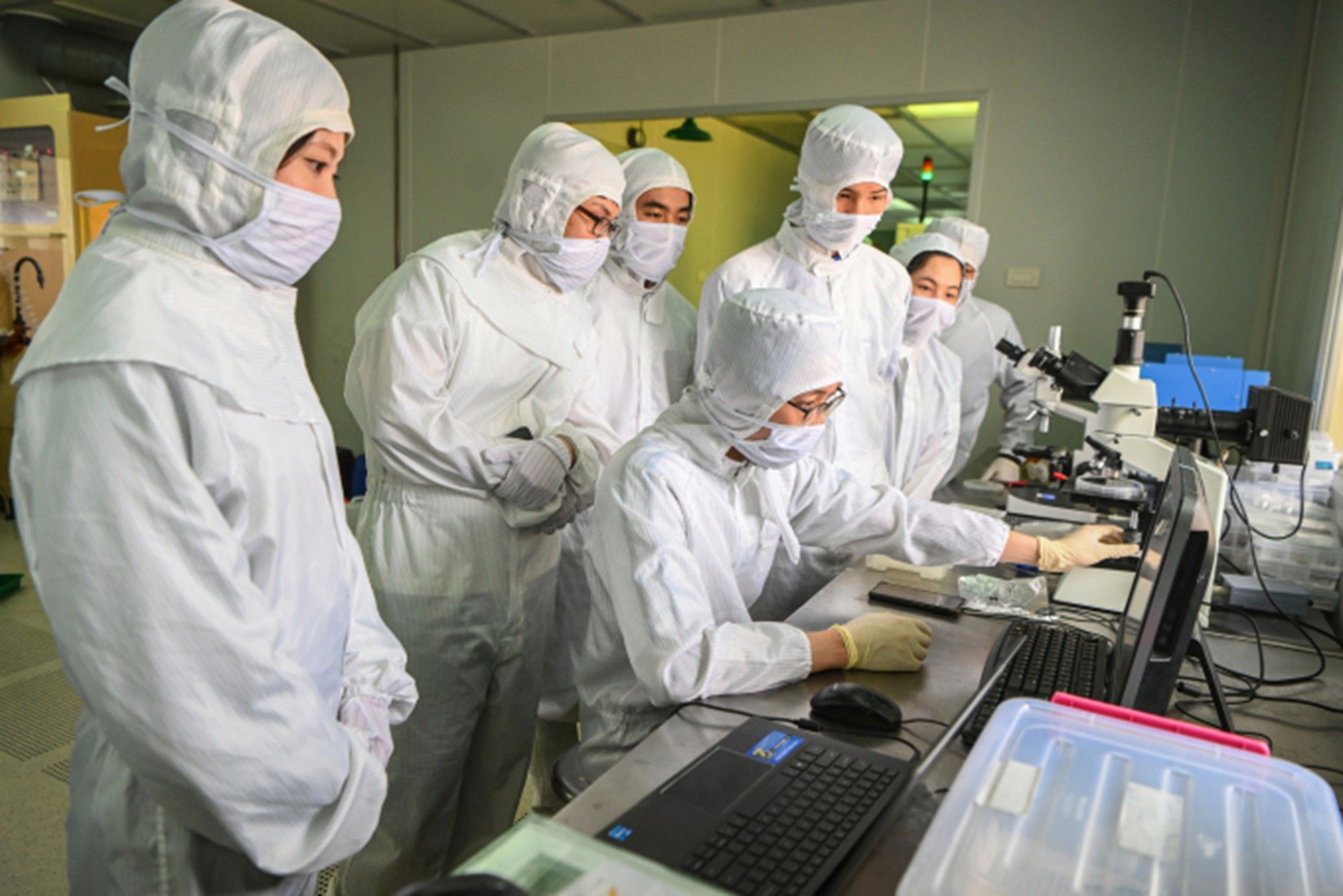The global semiconductor race is heating up and Vietnam is very much part of it. The presence of leading global corporations such as Intel and Samsung in the country as well as the government’s efforts to encourage both international and domestic manufacturers are driving the further development of semiconductor manufacturing, raising Vietnam’s position on the global semiconductor manufacturing map.
Opportunity for Vietnam to become global center of semiconductor production
The global semiconductor race is heating up and Vietnam is very much part of it. The presence of leading global corporations such as Intel and Samsung in the country as well as the government’s efforts to encourage both international and domestic manufacturers are driving the further development of semiconductor manufacturing, raising Vietnam’s position on the global semiconductor manufacturing map.
Potential
Mr. Nguyen Le Huy, Lecturer at the Faculty of Science, Engineering & Technology at RMIT University, said the global semiconductor industry is expected to grow 10 per cent in 2022, hitting $600 billion for the first time, and will become a trillion-dollar industry by 2030. He believes that joining in the global R&D, design, production, and distribution of semiconductors will bring enormous economic advantages to the country.
Additionally, researchers Technavio have said that Vietnam’s semiconductor market will reach $1.65 billion in the 2021-2025 period, with a compound annual growth rate (CAGR) of some 6.52 per cent. Such forecasts confirm the growth potential of the semiconductor sector in Vietnam.
At a meeting with Prime Minister Pham Minh Chinh on August 5, Mr. Roh Tae-Moon, General Director of South Korea’s Samsung Electronics, said it plans to begin manufacturing semiconductor parts in Vietnam in July next year. Many other international tech corporations have also expressed an interest in producing semiconductors in Vietnam, and the country is already home to Intel’s largest assembly and test factory, with investment of $1.5 billion.
In addition to foreign manufacturers, Vietnam’s semiconductor sector also sees the presence of many domestic manufacturers. On September 28, FPT Semiconductor, a unit of leading local tech company FPT, launched chips used in medical devices and targets supplying 25 million globally by 2023, with an eye on major markets such as Japan, Taiwan (China), China, and the US. At a meeting with the Prime Minister on August 16, the Military Industry-Telecoms Group (Viettel) also proposed participating in the research, design, and production of chips to meet domestic demand and for export.
Dr. Majo George, Lecturer at the Faculty of Business & Management at RMIT University, believes the decision to produce chips in Vietnam comes at the right time, as the world is experiencing a chip shortage and Vietnam is undergoing a digital transformation that includes a transition to digital governance, digital economy, and digital society.
“Venturing into chip manufacturing will be a chance for Vietnam to self-develop or acquire cutting-edge technological expertise,” he explained. “This may be a challenge, but the move will boost Vietnam’s future aspirations to become the prominent manufacturing hub in the region.” He added that local industries would be able to source locally-manufactured chips, while Vietnam’s chip output would help alleviate global and regional shortages.

Proposal
In order to further promote the potential and overcome the challenges in semiconductor manufacturing in Vietnam, the RMIT University lecturers suggested it is necessary to fully prepare in regards to training and resolving issues surrounding human resources.
Dr. George emphasized that it is necessary to prioritize quality assurance in Vietnam-made chips as well as research and product updates. He pointed out that one of the challenges for semiconductor manufacturing in Vietnam is recruiting highly-skilled and experienced researchers and specialists. “Vietnam must increase the training and development of local talent,” he said. “This can be accomplished by cooperating with prestigious universities and research institutes.”
Meanwhile, Dr. Nguyen Manh Hung, Lecturer at the Faculty of Business & Management at RMIT University, said that to build a competitive semiconductor industry requires more than just capital investment. “It will be a challenge to access the right technologies and set up a supply chain that can ensure steady supply and consumption,” he said. He added that the main goal of Vietnam’s entry into this competitive market should probably be to strengthen its chip design capabilities and move towards the production of high-end semiconductor components.
Mr. Huy suggested that medium- and long-term strategies are needed to develop the semiconductor industry in Vietnam. In the medium term, Vietnam needs to participate in R&D stages that are heavily reliant on the human factor. The government needs to continue to invest and offer preferential policies to attract large corporations such as Samsung, Intel, Synopsys, Cadence, and others, and it is necessary to introduce policies to support universities in training high-quality graduates in semiconductors.
“In the long term, Vietnam needs to make efforts to reach cooperative agreements to support technology transfer from semiconductor leaders such as the US, Japan, and South Korea,” Mr. Huy added. “From there, it can progress towards complete autonomy in all the important stages of semiconductor production.”
(By: vneconomy)

 VN
VN

 EN
EN
 KR
KR
 JP
JP
 CN
CN



 Semiconductor Equipment
Semiconductor Equipment

